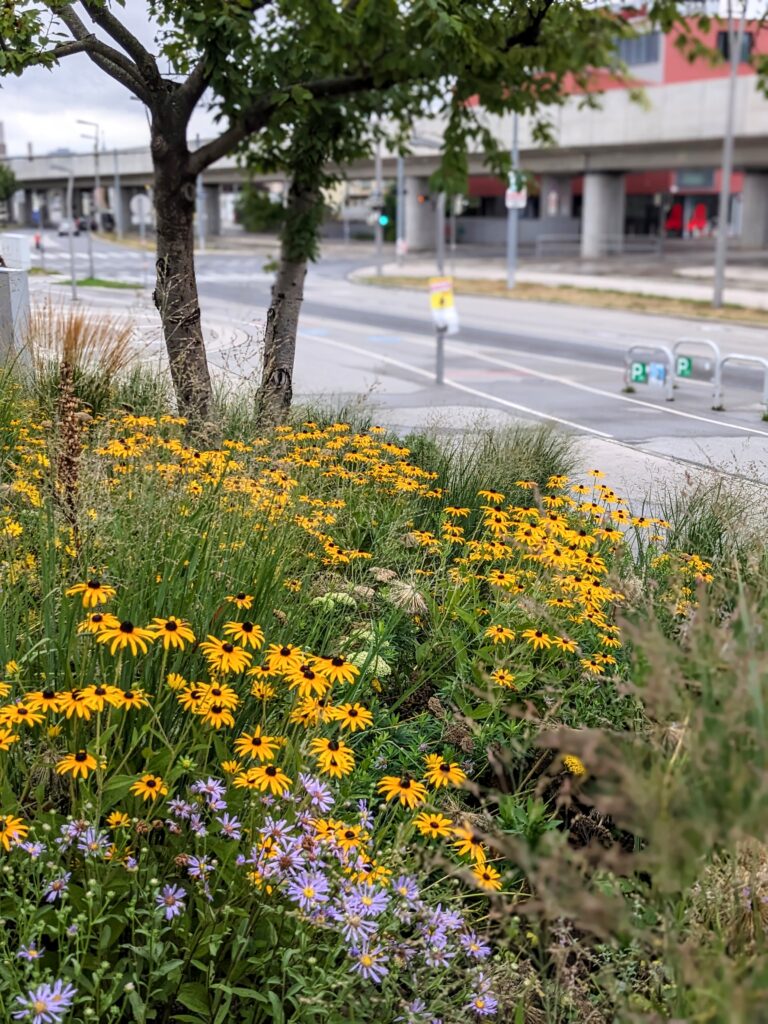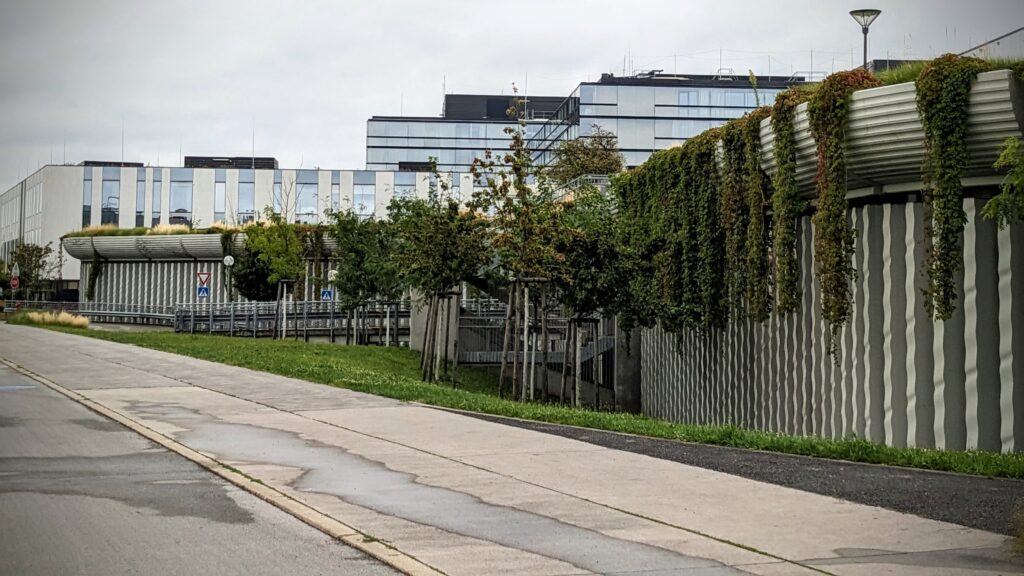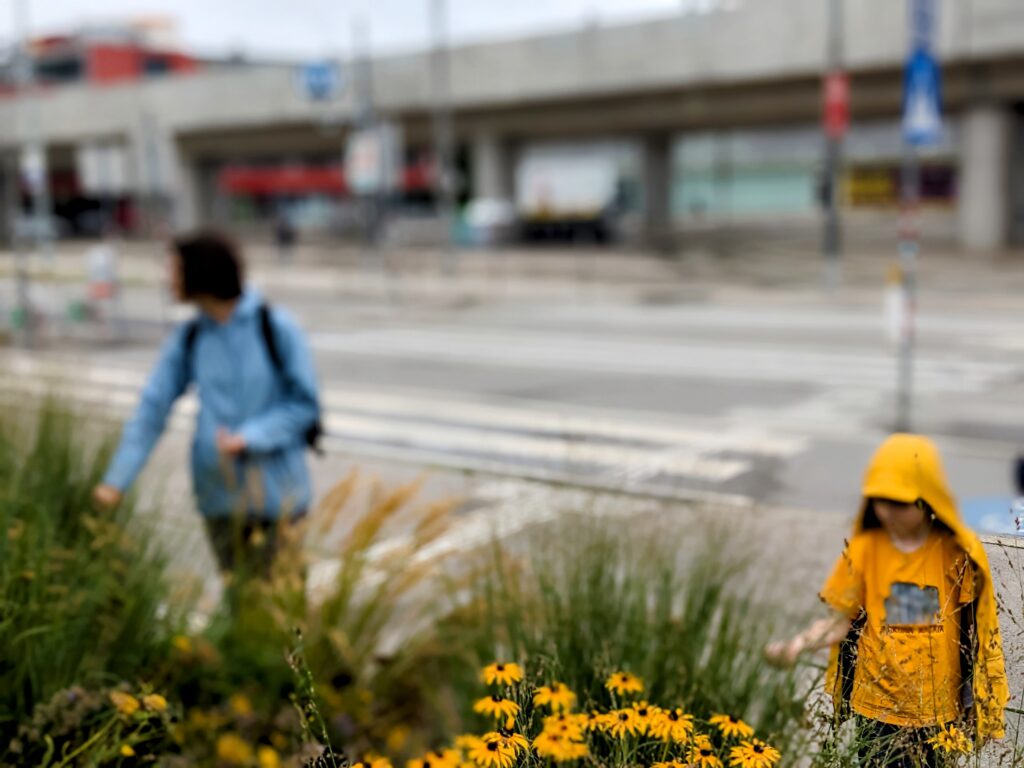I can’t seem to go on vacation nowadays without being stopped in my tracks when I see examples of habitat gardening. I don’t know if it’s just a result of working at the Dyck Arboretum for over ten years, or a function of having been bit by the native plant bug (pun intended). Either way, I want to share with you an excellent example of drought-tolerant, wildlife-friendly plants being utilized in an urban setting.
This summer I visited Vienna, Austria and the surrounding areas, and was struck by several really well-designed perennial gardens. For example, while waiting for a bus, a matrix planting along a hospital accessibility entrance ramp caught my attention.
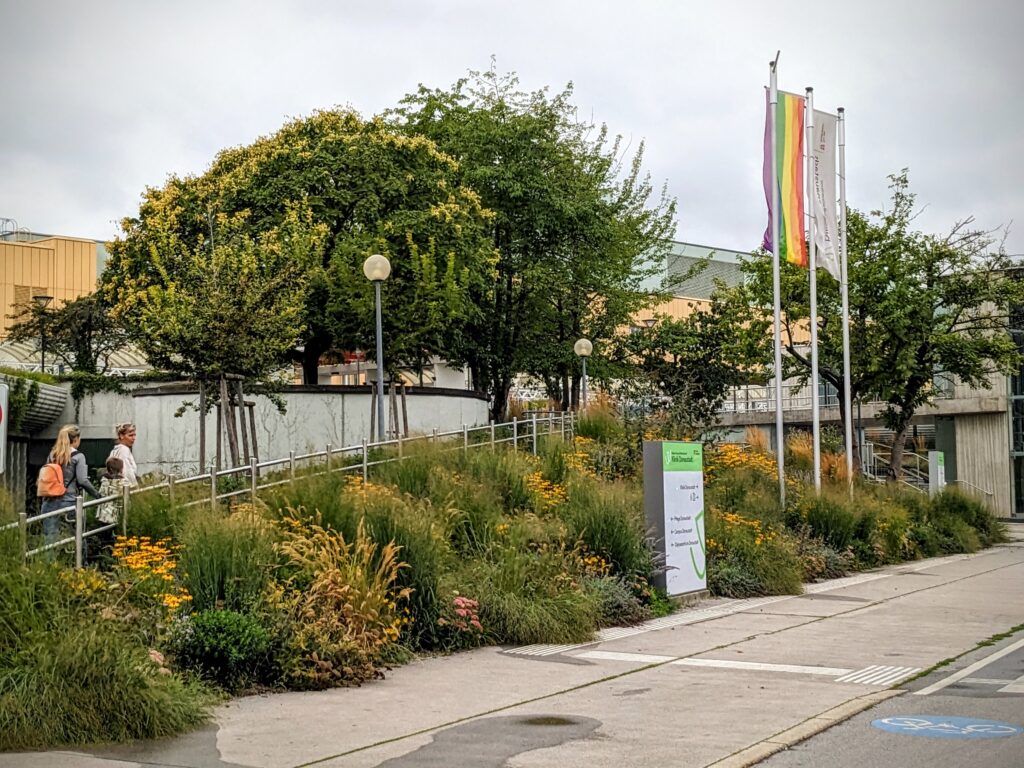
In the 10 minutes we were at the bus stop, my mind (and my camera) took in as much as they could. I immediately set out to identify how the landscape architect had successfully employed the design principles I’ve heard repeated time and again by my co-workers in their Native Plant School classes.
If you’re not familiar with matrix planting, it’s a landscape design style, popularized by Dutch landscape architect Piet Oudolf. Famous North American gardens using matrix planting include public garden spaces such as “The High Line” in New York City and Lurie Garden in Chicago.
In this particular landscape, I could easily identify the three layers of the matrix: the structural layer, the seasonal interest layer and the ground cover layer. In the structural layer, several small shade trees and a few larger perennials anchored the corners of the planting and in some cases softened particularly sharp edges of the hardscaping.
The seasonal interest layer included repeated blocks of switchgrass, feather reed grass, black-eyed susan, yarrow, asters, ornamental onion, tickseed, and others. Groundcover plants were interspersed throughout for weed management, particularly along the edges of the walkway.
In addition to its visual impact, I also couldn’t ignore the sensory and emotional function that this garden was fulfilling. As my friends and I waited for the bus, we couldn’t help but walk over to feel the softness of the grasses. This planting certainly engaged multiple senses of passersby – providing a welcome contrast to the hardness of the concrete structures that surround it.
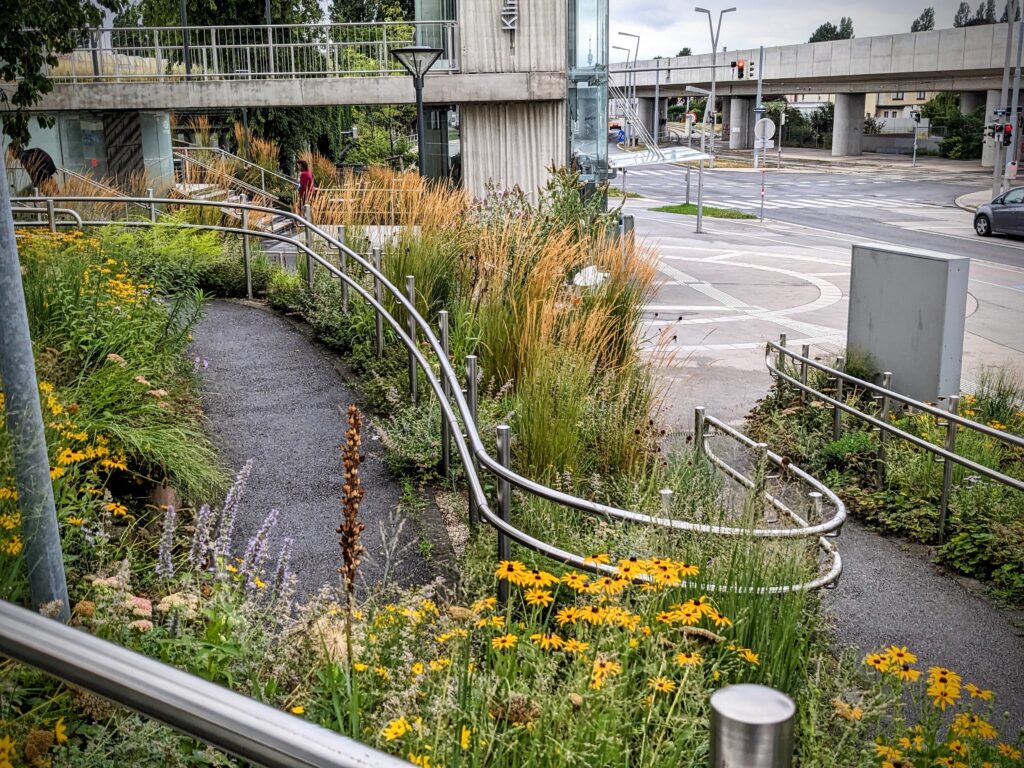
There was also a rooftop garden that I imagine is a spacious area for visitors and patients to relax and connect with nature. I didn’t have enough time to run up to it, but I was able to identify switchgrass and Mexican feathergrass from below.
I was so very encouraged by my habitat garden sighting in Vienna. It’s a wonderful feeling to travel and see examples where someone, at some point, must have had the courage to speak up and say “Why don’t we plant a habitat garden here?” It will have a positive impact on our public and our neighborhood, but also on the environment.
We continue to receive more inquiries here at the Arboretum from all sorts of places: not only homeowners and homeowners associations, but also from for profit and not for profit business entities, and from churches, libraries and schools. The collective impact you are making in your communities is awe-inspiring. Keep it up and continue to share with us your habitat gardening challenges and successes!

